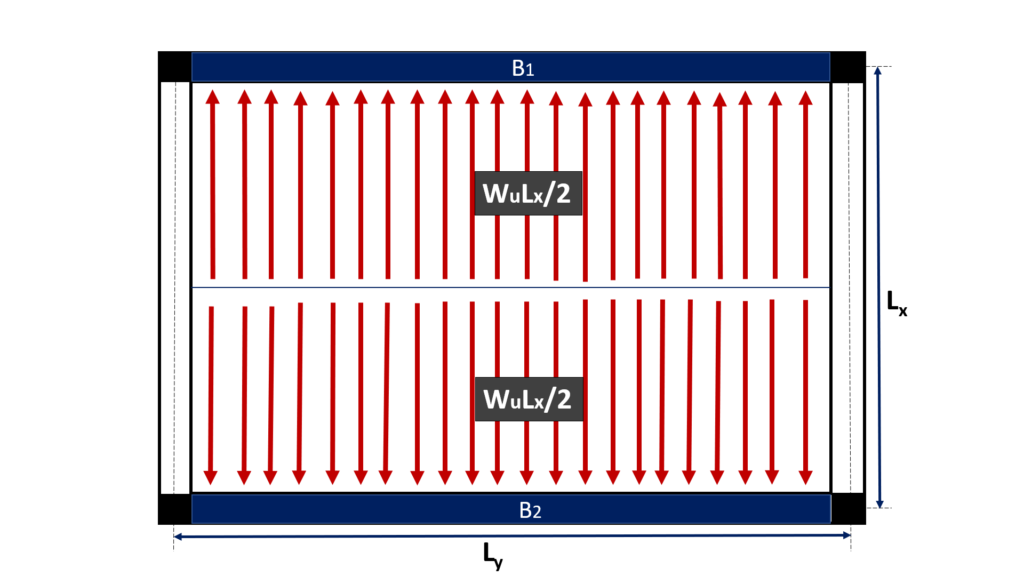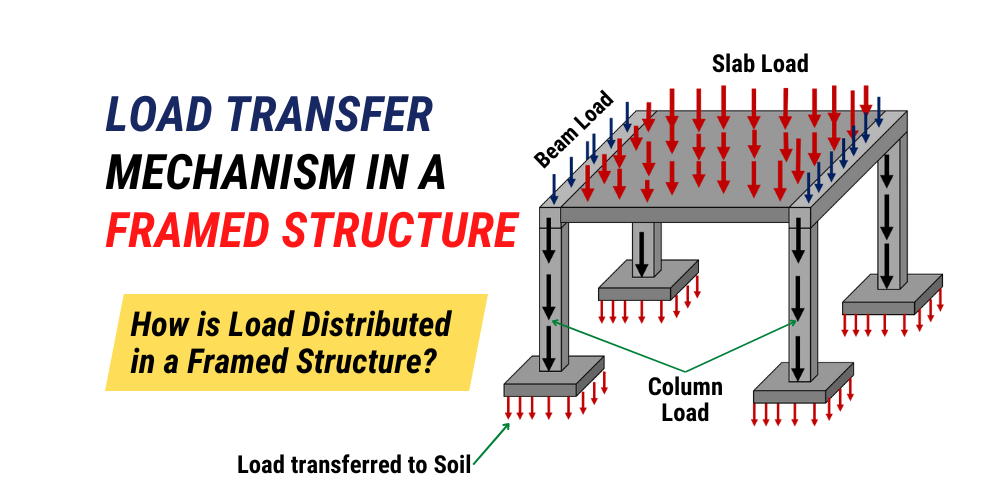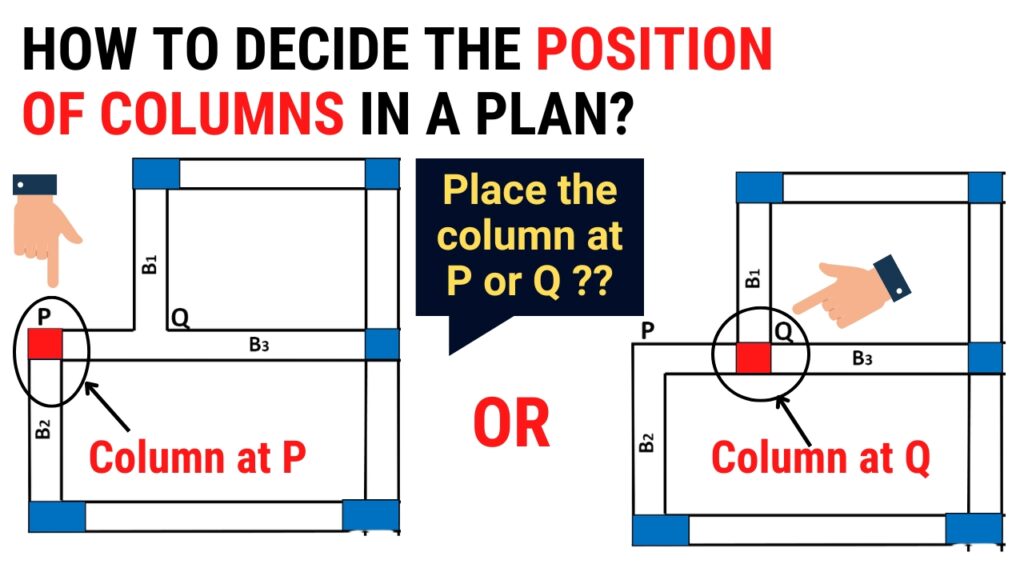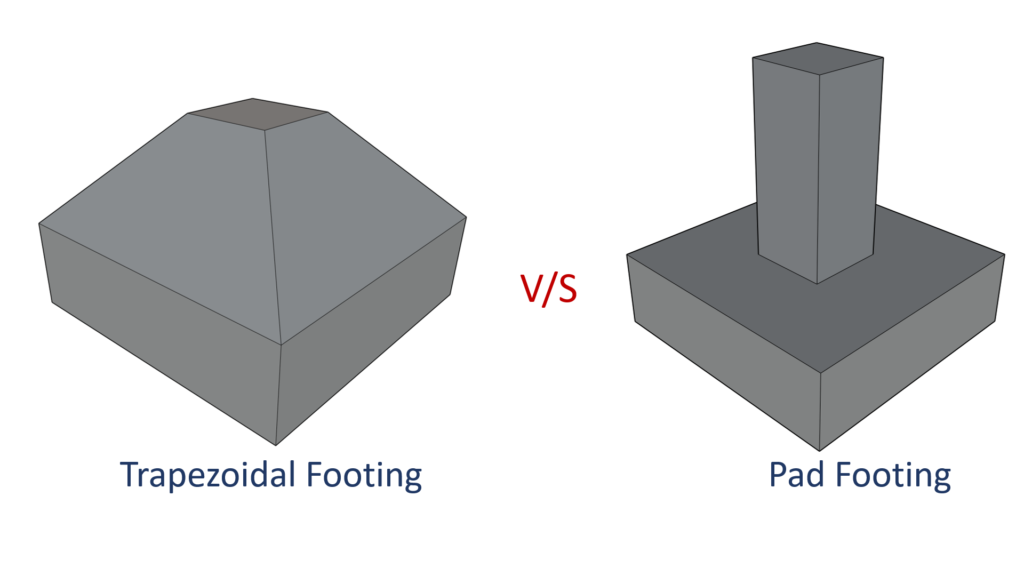What is a Framed Structure?
A framed structure is a type of construction that is made up of various structural elements, such as slabs, beams, columns, and foundations, that work together to transfer and distribute loads throughout the building.

Load Transfer Mechanism in Framed Structures:
The load transfer mechanism in a framed structure refers to the way that loads are transmitted from one element to another and eventually to the ground. In a framed structure, loads are introduced into the structure through various means, such as gravity, wind, earthquakes, and other external forces. These loads are then transferred from one element to another, through stress and deformation in the material, until they reach the foundation where they are transferred to the ground.

Load transfer in slabs:
The load transfer in a framed structure starts with the slabs which are flat horizontal surfaces made with a combination of concrete and steel. The total load of a slab includes the Live Load, Floor finishing Load, and the self-weight of the slab. This load is transferred to the beams which provide support to the slab, and from the beams, the load is transferred to the supporting columns. Again, from columns to the footings and finally to the soil on which the whole structure is to be constructed.
The transfer of loads from a slab to beams depends completely on the type of slab, whether it’s one-way or two-way. The type of slab is determined by calculating its aspect ratio (i.e., the ratio of the longer span to the shorter span) as Ly/Lx.
Types of slabs:


If Ly/Lx ≥ 2, the slab is considered a one-way slab. And for a two-way slab Ly/Lx < 2.
Load transfer in one-way slabs:
In a one-way slab, loads are carried in one direction only, along the shorter span of the slab. The load is distributed equally among the beams supporting the longer span. For example, if the total load carried by the slab is W kN, then it will be carried equally by the longitudinal beams, i.e., W/2 kN each.
It shall be noted that, the load carried by the slab is the floor load, which is expressed in terms of kN/m2 and this load is transferred to the beams as a uniformly distributed load.

Formula for calculating load transfer in One way slab:
Suppose Wu is the floor load carried by the slab in terms of kN/m2.
The load carried by the beams B1 and B2 in terms of kN/m will be WuLx/2.
Where Wu is the floor load carried by the slab and Lx is the shorter span of the one-way slab.
Load transfer in Two-way slabs:

In a two-way slab, the load distribution takes place in both the directions, and the load is carried by all the beams or walls along all 4 sides.To understand the load distribution in a two-way slab, it is divided into four parts: two triangles and two trapezoids. The angles subtended by the congruent sides of the triangle to the adjacent spans are 45°. Typically, the load of the triangular areas is carried by the beams along the shorter span of the slab, while the load of the trapezoidal areas is carried by the beams along the longer span.
Formula for calculating load transfer in Two-way slab:
It shall be noted that, the load transferred from slab is the floor load in terms of kN/m2 and this load is carried by the beams as a uniformly distributed load. To transfer the floor load of a two-way slab in such a way that it is carried by the beams as UDL we use the following formulas;
Load transferred from the triangular areas to each of the beams along the shorter span = WuLx/3
Load transferred from the trapezoidal areas of the slab to each of the beams along the longer span = WuLx/2(1-1/2ß)
Where,
Wu is the floor load carried by the slab, Lx is the shorter span of the slab and ß is the aspect ratio (I.e Ly/Lx)
Conclusion:
In conclusion, the load transfer mechanism in a framed structure is a critical aspect of the design and construction of a building. It involves the proper distribution and transfer of loads throughout the structure, from slabs to the beams then from beams to the columns, and finally to the foundation.




